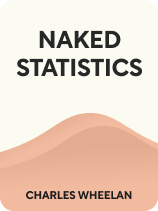

This article is an excerpt from the Shortform book guide to "Naked Statistics" by Charles Wheelan. Shortform has the world's best summaries and analyses of books you should be reading.
Like this article? Sign up for a free trial here .
What is healthy-user bias? How can we isolate whether an intervention actually accounts for differences between individuals?
Healthy-user bias occurs in studies that aim to assess the effect of a certain treatment or intervention. Because the people who choose to partake in such studies tend to be significantly different from their peers, it’s difficult to assess the degree to which the intervention (and not the participants’ characteristics) accounts for the findings.
Keep reading to learn about healthy-user bias and how it affects research findings.
Healthy-User Bias
Samples can be biased because of the types of people who engage in the treatment we’re interested in studying. As Wheelan explains in Naked Statistics, the people who choose to engage in whichever activity or habit that we’re collecting data on are likely to be different in significant ways from people who don’t engage in the “treatment.” Therefore, isolating whether a treatment actually accounts for differences between individuals becomes challenging.
For example, say we were interested in studying the relationship between swimming and health in senior citizens. We would need to be cognizant of the fact that seniors who are swimming are likely different from their average peers outside of the pool as well. Seniors who are taking the time to swim likely take care of their health in other aspects of their life, such as their diet. Additionally, those seniors who are able to swim into old age are likely in better physical condition than their peers to begin with, hence their continued participation in sports.
| Healthy-User Bias in Heart Health A study published in the British Medical Journal examined the effect of healthy user bias in evaluating the effectiveness of antihypertensive and lipid-lowering medications. Results showed that patients who took the medications were also more likely to have higher levels of income and more education, were more physically active, and were less likely to be smokers than patients who didn’t take the medications. The authors of the study cite the importance of assessing medical interventions for healthy user bias because unstudied variables can make interventions seem more successful than they truly are. In this case, for instance, being more physically active and not smoking both have health benefits that could be boosting the drug-takers’ overall health. |

———End of Preview———
Like what you just read? Read the rest of the world's best book summary and analysis of Charles Wheelan's "Naked Statistics" at Shortform .
Here's what you'll find in our full Naked Statistics summary :
- An explanation and breakdown of statistics into digestible terms
- How statistics can inform collective decision-making
- Why learning statistics is an exercise in self-empowerment






